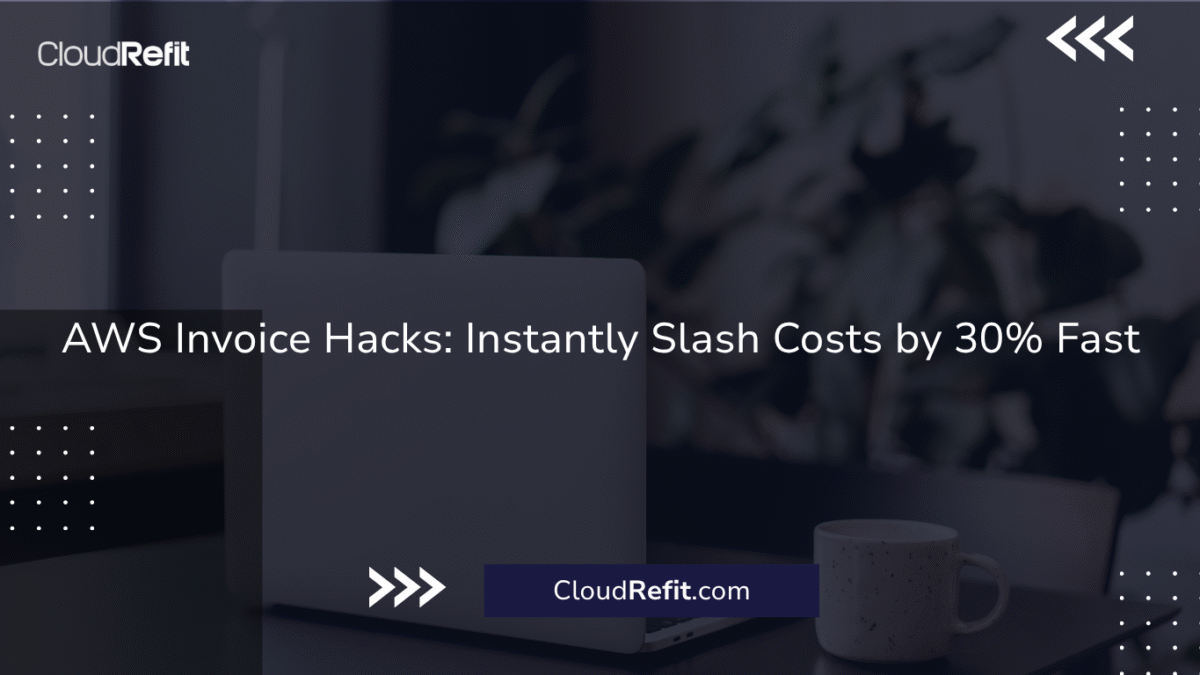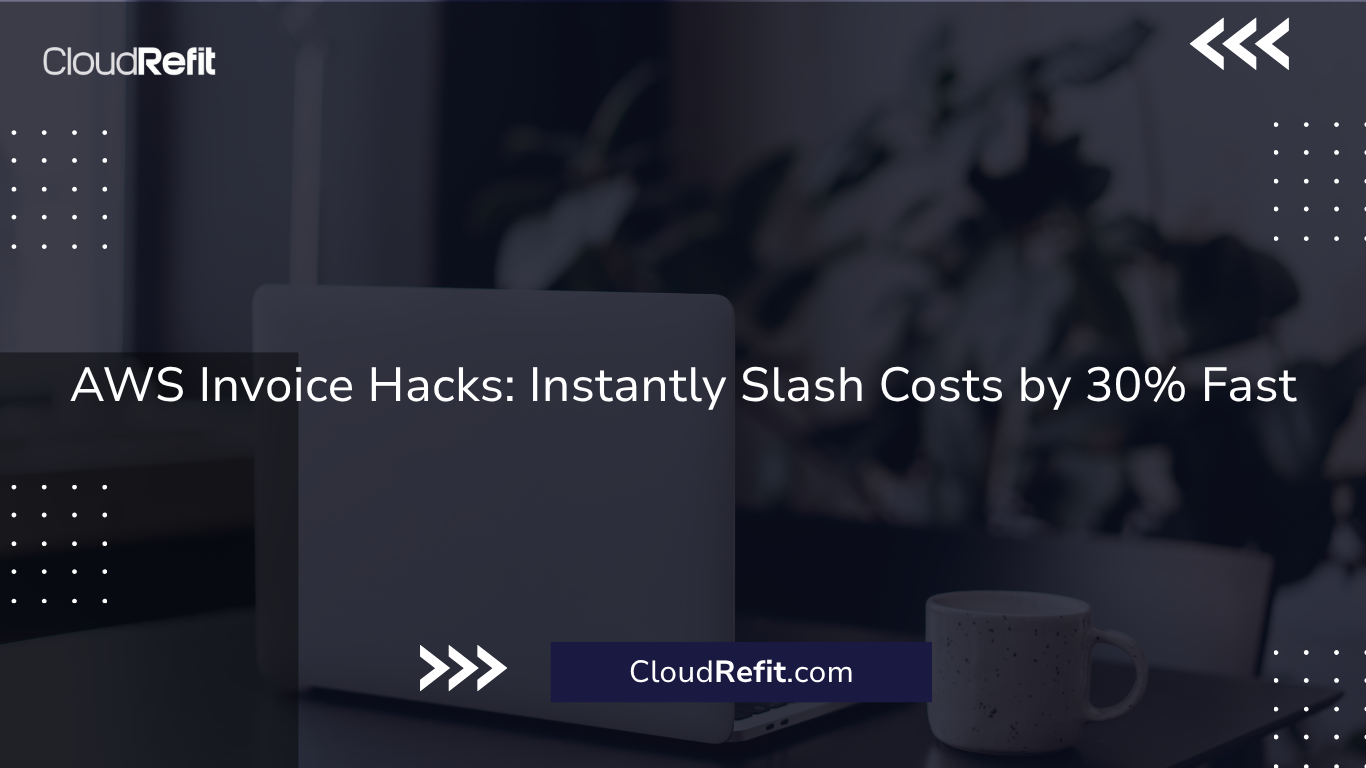AWS Invoice management is a growing challenge for many startups and SMEs, especially when AWS usage goes unchecked. At CloudRefit, we’ve crafted a practical four-step framework designed to shrink your AWS invoice by up to 30% within just 30 days—without compromising performance or security. In this guide, we’ll walk you through auditing your current spend, right-sizing resources, optimizing storage, and adopting open-source replacements.

By the end, you’ll have an actionable plan to slash waste, streamline costs, and regain control of your cloud budget.
Step 1: Audit Your Current Usage
1. Leverage AWS Cost Explorer
Start by visualizing your monthly spend in Cost Explorer. Identify your top spenders—EC2, RDS, S3—and track daily and monthly trends. Export CSV reports to pinpoint cost spikes and anomalies.
2. Use AWS Trusted Advisor
Trusted Advisor surfaces best‑practice recommendations across cost, security, and performance. Pay close attention to “Underutilized Instances” and “Idle Resources” alerts.
3. Compile a List of Idle Resources
Document EC2 instances, EBS volumes, snapshots, and databases with little or no activity. These unused resources are often the easiest wins for immediate savings on your next AWS invoice.
Step 2: Right‑Size and Re‑Provision
1. Downsize Over‑Provisioned Instances
Based on utilization reports, switch from larger instance types (e.g., m5.large) to the smallest family member that still meets your workload needs. This simple move can trim compute costs substantially.
2. Commit with Reserved Instances & Savings Plans
For steady‑state workloads, purchase Reserved Instances (1‑ or 3‑year terms) or enable Savings Plans to save up to 40% versus On‑Demand pricing.
3. Enable Auto Scaling
Configure Auto Scaling groups to automatically scale your EC2 fleet based on real‑time demand—so you never pay for idle capacity again, lowering your next month’s AWS invoice.
Step 3: Optimize Storage
1. Implement S3 Intelligent‑Tiering
Automatically move objects between hot and cold tiers depending on access patterns—reducing storage costs while keeping data readily available.
2. Define Lifecycle Policies
Set rules to transition or expire objects older than a defined threshold, ensuring you don’t overpay for stale data.
3. Clean Up EBS Snapshots
Use AWS Data Lifecycle Manager to automatically delete snapshots older than your retention policy, preventing unnecessary storage charges.
Step 4: Adopt Open‑Source Alternatives
1. Open‑Source Databases
Replace managed RDS instances with self‑managed PostgreSQL or MariaDB on EC2, or leverage Aurora Serverless for an on‑demand, pay‑per‑use model.
2. Search Engines
Swap AWS’s paid Elasticsearch Service for OpenSearch, hosted and tuned by CloudRefit for cost‑effective indexing and querying.
3. On‑Premise Object Storage
Deploy MinIO or Ceph within your regional data center to offload S3–like storage—ensuring compliance and cutting down on high S3 egress fees that inflate your AWS invoice.
Conclusion
By implementing these four steps—auditing spend, right‑sizing instances, optimizing storage, and embracing open‑source—you can realistically reduce your AWS invoice by up to 30% in just 30 days. At CloudRefit, we provide end‑to‑end support: from a free assessment and personalized roadmap to fast implementation and ongoing optimization.
Ready to take control of your cloud costs? Book your free consultation now and start slashing your AWS invoice today.

